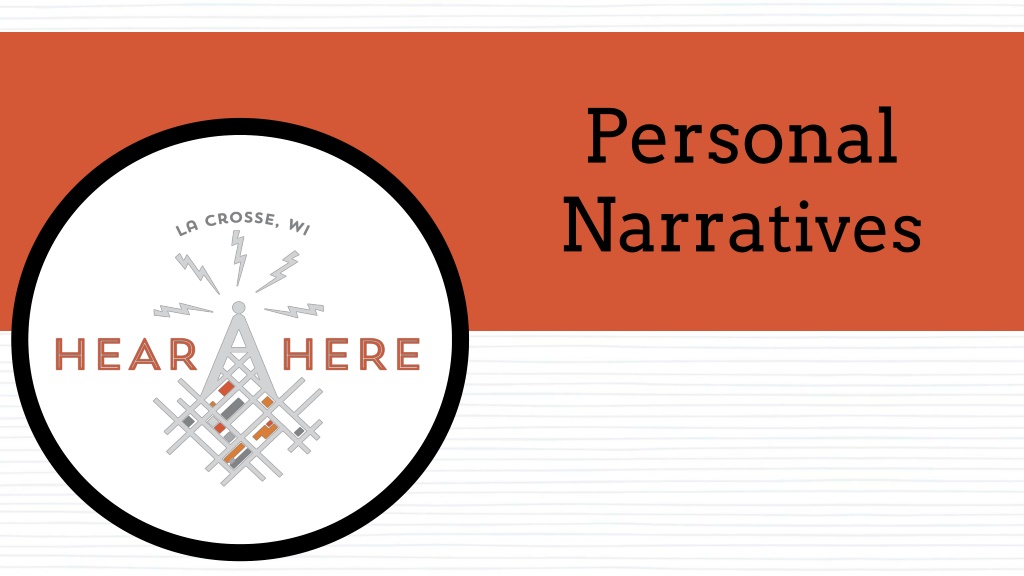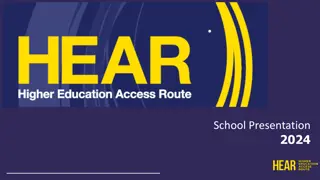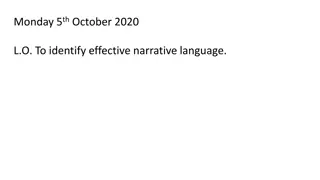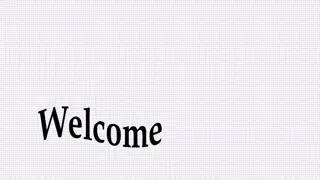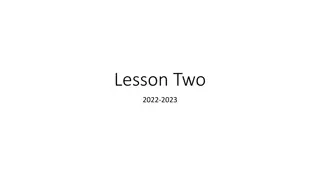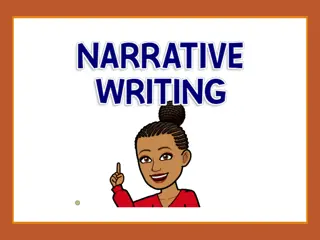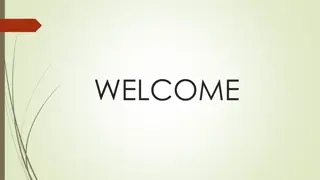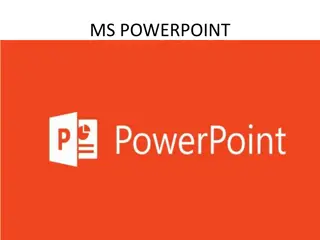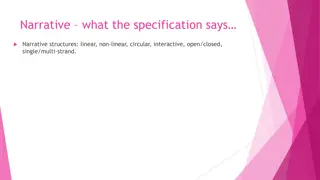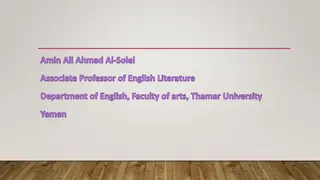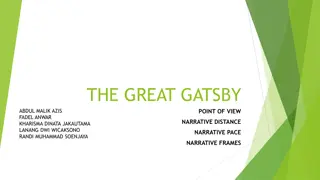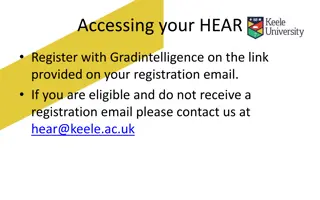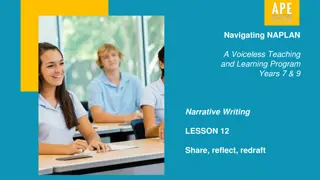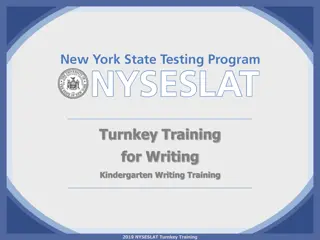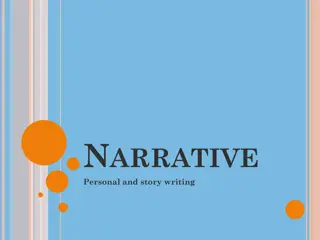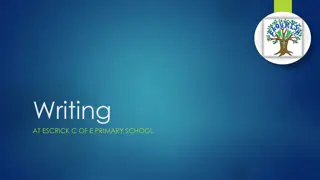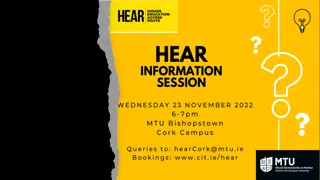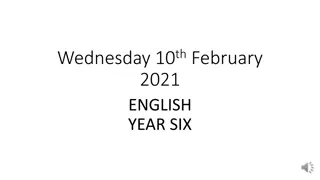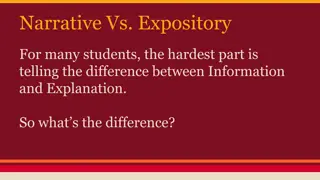Crafting Compelling Personal Narratives: A Roadmap to Storytelling
Explore the elements of a good narrative, learn from a real example with Hunter Wagner's story, and discover how to choose, set up, and share your own personal narrative using the provided lesson roadmap and narrative organizer.
Download Presentation

Please find below an Image/Link to download the presentation.
The content on the website is provided AS IS for your information and personal use only. It may not be sold, licensed, or shared on other websites without obtaining consent from the author. Download presentation by click this link. If you encounter any issues during the download, it is possible that the publisher has removed the file from their server.
E N D
Presentation Transcript
Personal Narratives
Lesson Road Map What makes a good narrative or story? Listen to a Hear, Here story as an example Choosing a narrative Setting up your personal narrative Using the Narrative Organizer Share your narrative!
What Makes a Good Narrative or Story?
What makes a good story? A beginning, middle, and end About a specific event that happened at a specific place told by the person the event happened to Includes details that make the story seem real A deeper meaning or message in the story
Hear, Here: Hunter Wagner s Story
Example Narrative Click to listen to Hunter Wagner s story.
Transcript of Hunters Story Hello, my name is Hunter Wagner. I m a freshman in high school and I have a disability. I am blind. I have what s called optic nerve dysplasia which means I cannot see at all. I don t have any light perception or anything. I have some experiences in La Crosse where I have walked across a bridge. It s called urban hiking. So, basically, what urban hiking is you walk around the city for exercise. You go on hills, of course a bridge, or maybe a bluff. I practice my orientation and mobility skills. Orientation and mobility is like my white cane skills. If people don t know, the cane is what I use to sense things in front of me. What I use is cardinal directions which is like north, east, south or west. Really, my favorite thing is on the bridge, I can hear a lot of sounds, especially construction sounds, and also like when semis pass the bridge wiggles. It feels cool. At first when I walked on the bridge, it felt like it was gonna collapse, but that wasn t the case. Just take one of your friends and just close your eyes on the bridge, and just think about it. Just think about what
Choosing a Story Start Thinking... Think about your favorite things to do in La Crosse. What are they? Where are they? Who do you do them with? Think of a specific event or time you did your favorite thing. Where were you? Who were you with? What happened?
Create Your Story-The Place Be sure to think of a specific event that happened in a specific place! Could you give someone directions to the place? Does it have an address? Ex: La Crosse is too broad, but The Pearl or The YMCA are specific enough
Creating Your Story- Introduction/Beginning Where does the story take place? Does the person hearing the story need any background information? Ex: Why are you going to this place? Who are you with?
Introduction Example I am blind. I have what s called optic nerve dysplasia which means I cannot see at all. I don t have any light perception or anything. I have some experiences in La Crosse where I have walked across a bridge. It s called urban hiking. So, basically, what urban hiking is you walk around the city for exercise. You go on hills, of course a bridge, or maybe a bluff. I practice my orientation and mobility skills.
Creating Your Story- Main Story/Middle Details of the story Provide at least 3 details in your story These details help the story come alive! What did you see? What did you smell or hear? How did you feel? What are the main things you did at the place? What were the main things that happened? Think about Hunter s story What were some details he gave?
Hunters Details Really, my favorite thing is on the bridge, I can hear a lot of sounds, especially construction sounds, and also like when semis pass the bridge wiggles. It feels cool. At first when I walked on the bridge, it felt like it was gonna collapse, but that wasn t the case.
Creating Your Story- Conclusion/End Why is your story important? What did you learn from the experience? How did you feel? What made the experience exciting or worth telling?
Conclusion Example At first when I walked on the bridge, it felt like it was gonna collapse, but that wasn t the case. Just take one of your friends and just close your eyes on the bridge, and just think about it. Just think about what it s like to be on a bridge without sight.
Writing Your Narrative Use the narrative organizer to tell your story Be sure to add descriptive details! You will share your stories with the class
Hear, Here Narrative Organizer Main sections of the organizer: Introduce Yourself Place Subject Beginning Middle 3 Details (sights, smell or noises, and feelings) End
